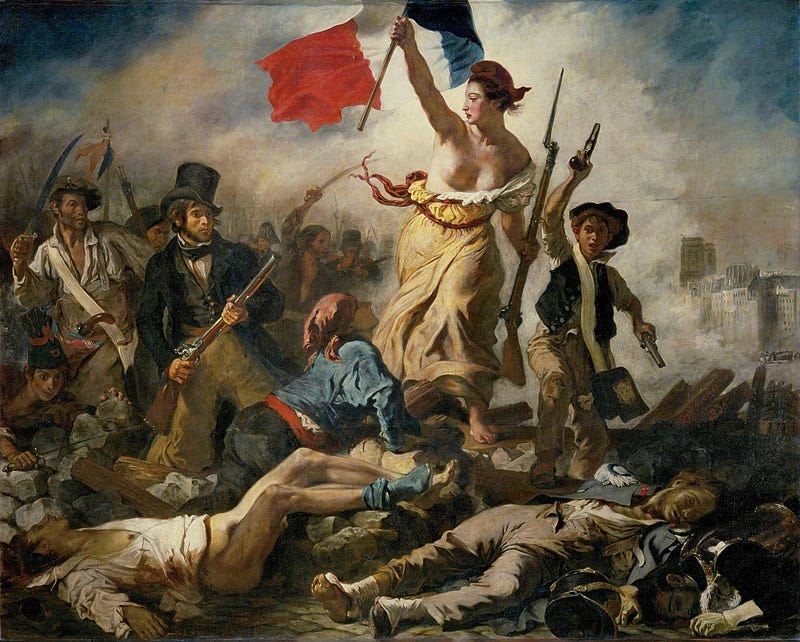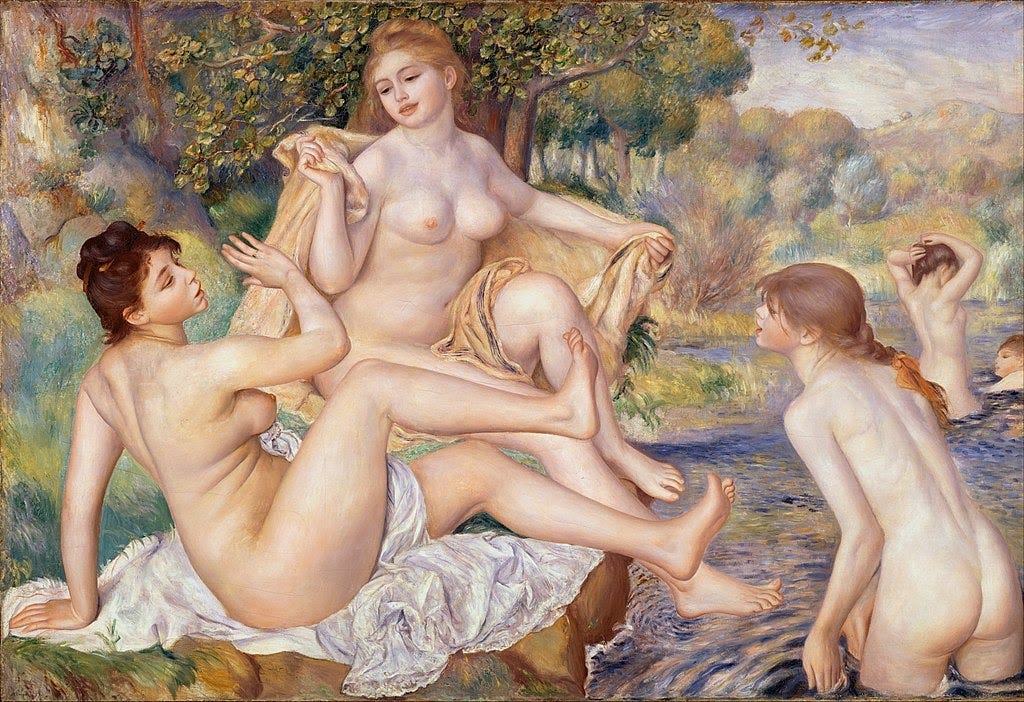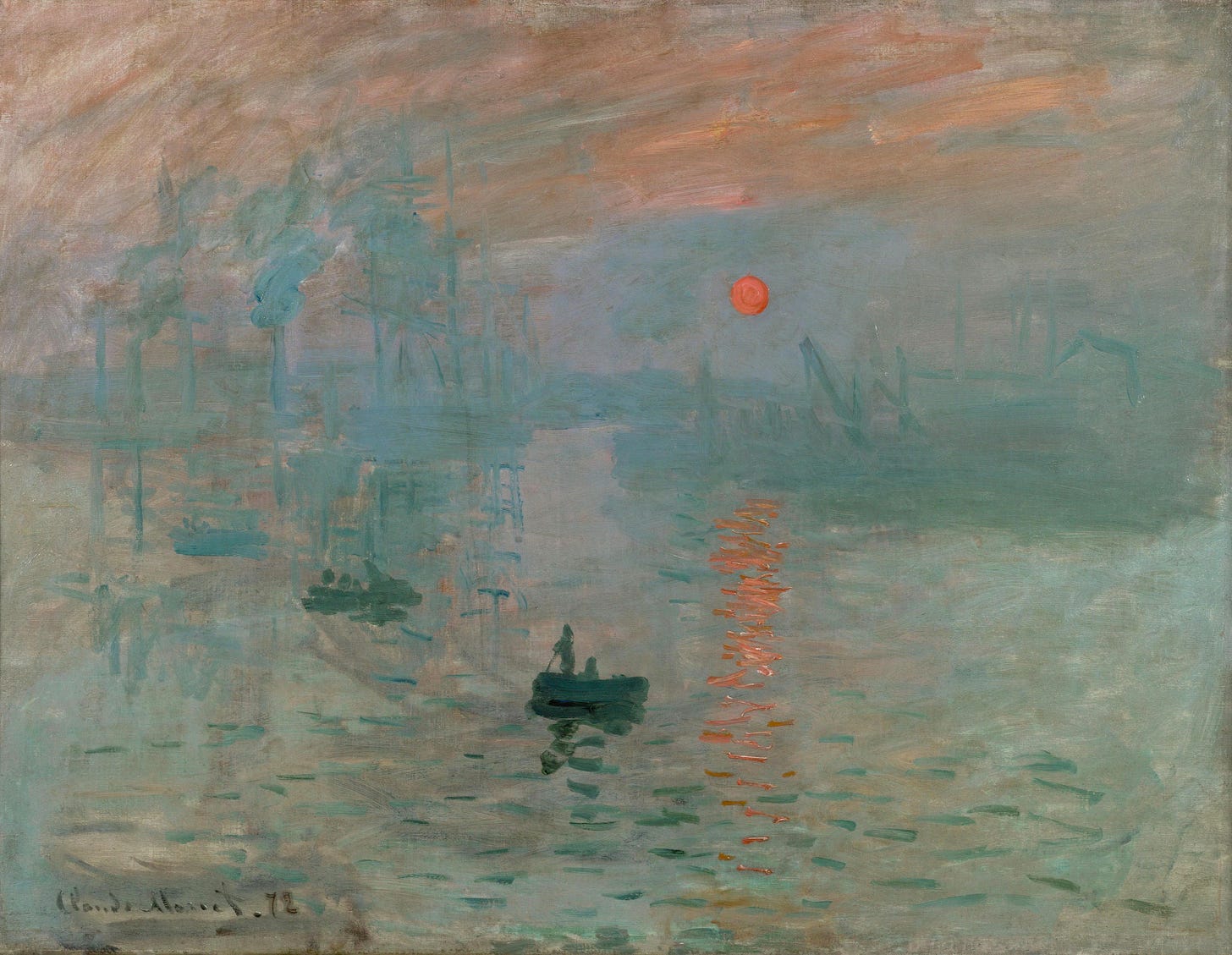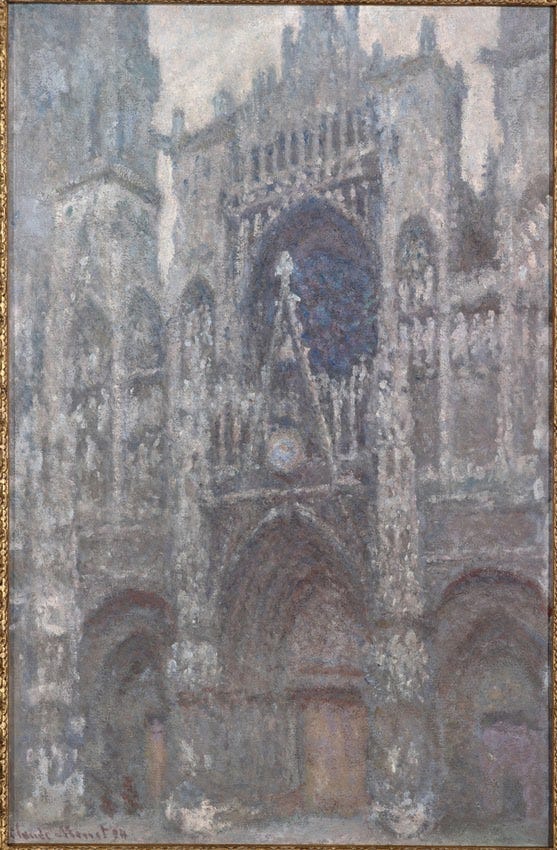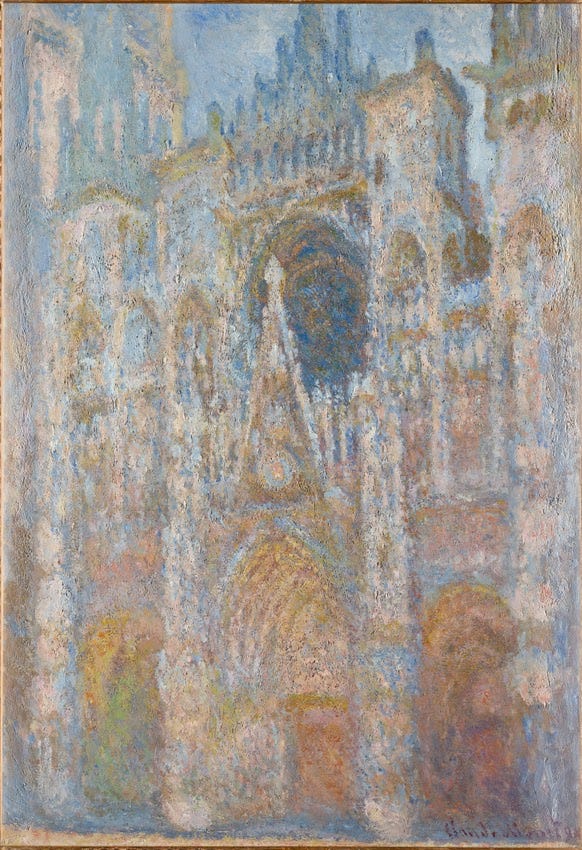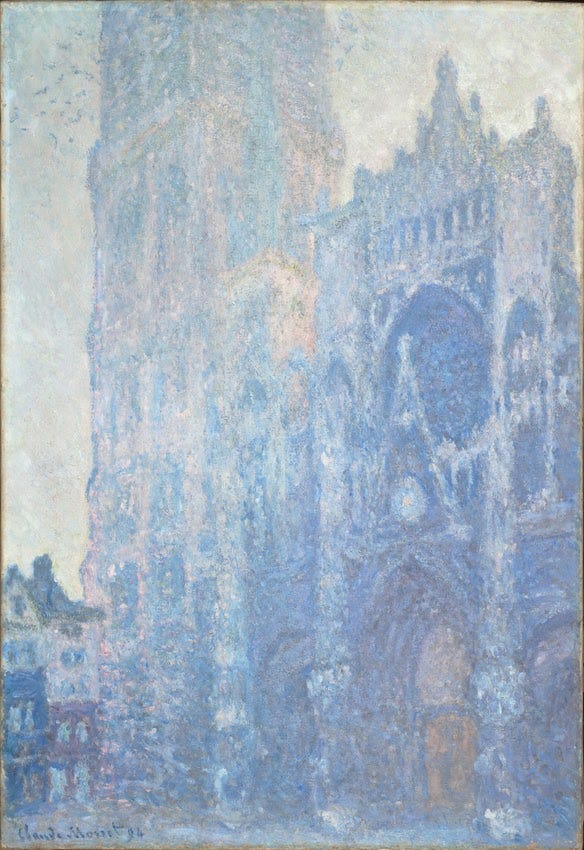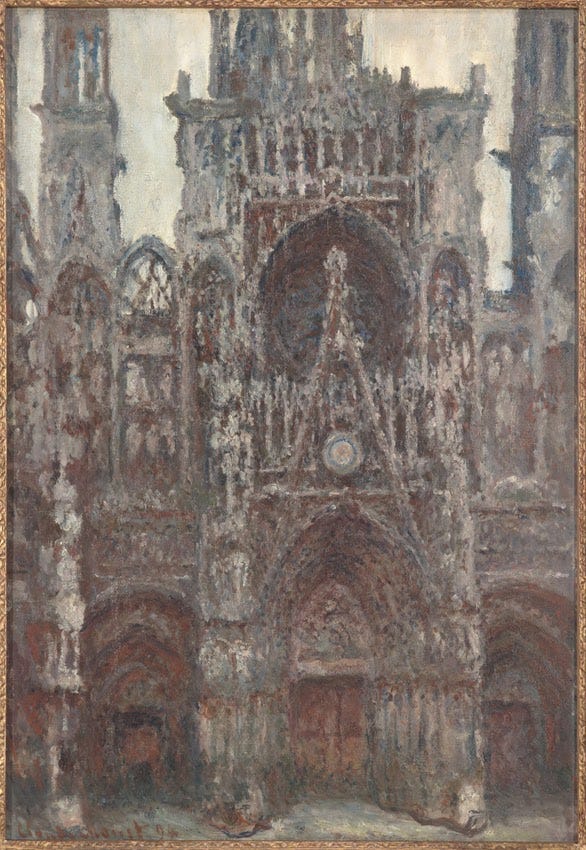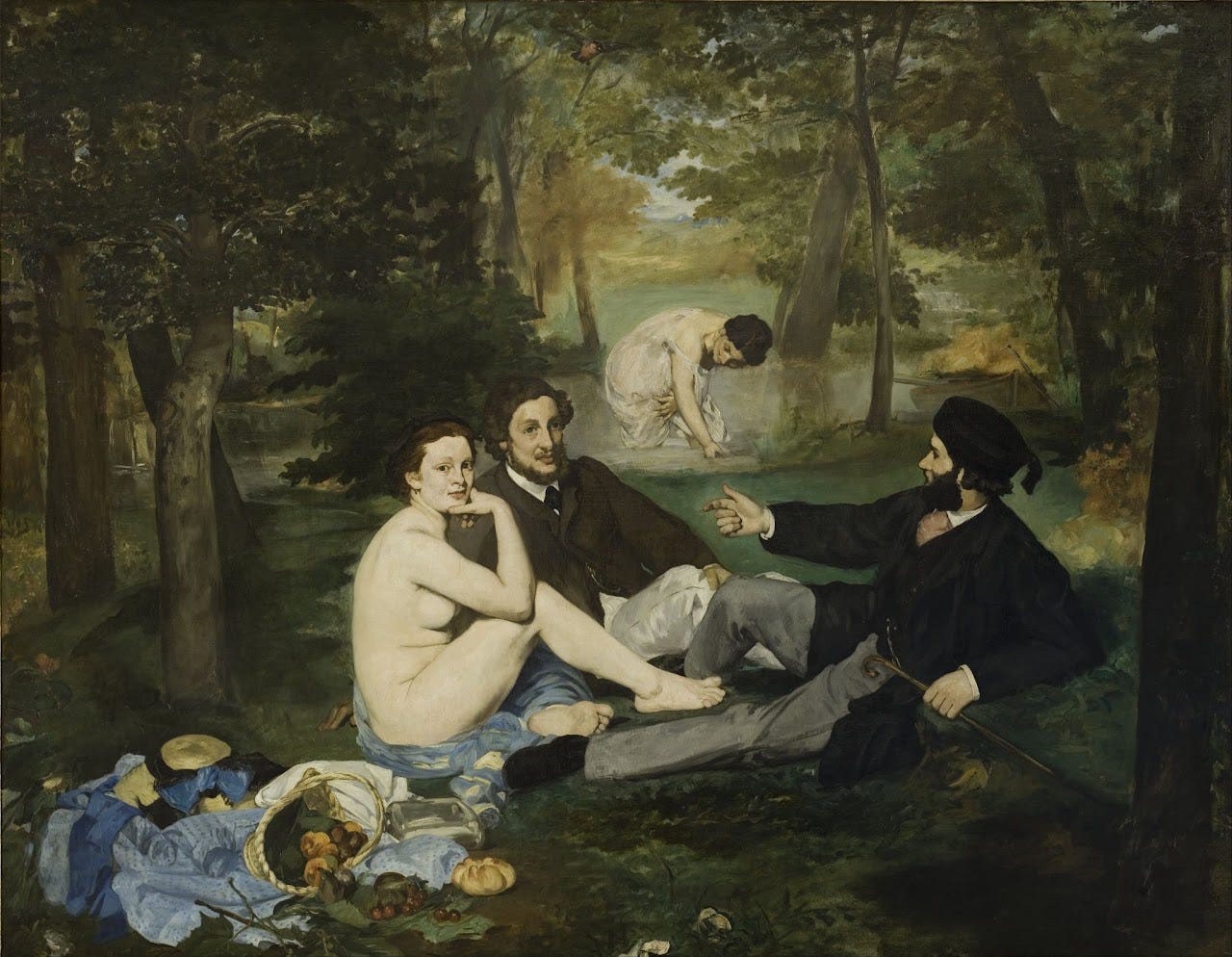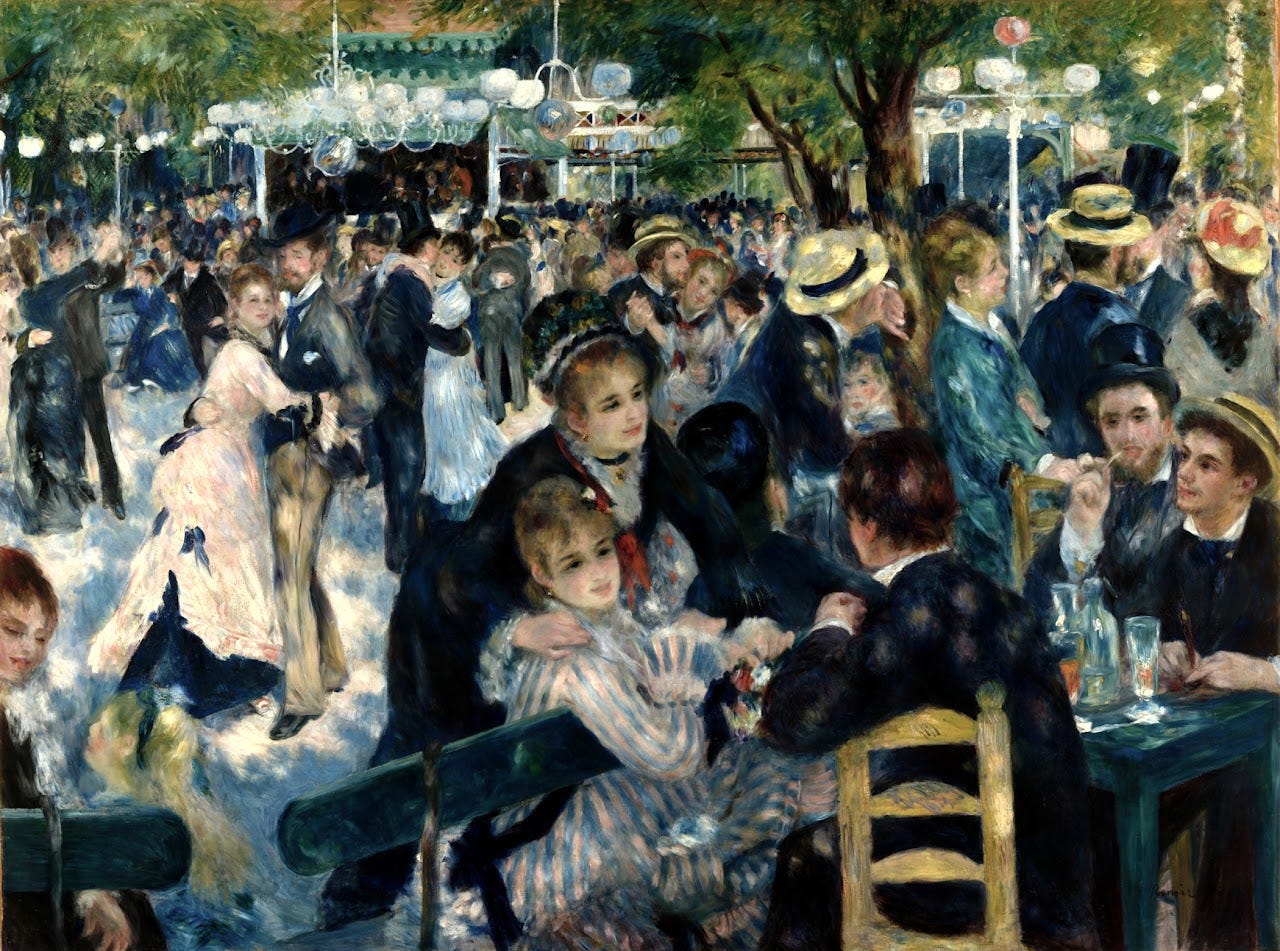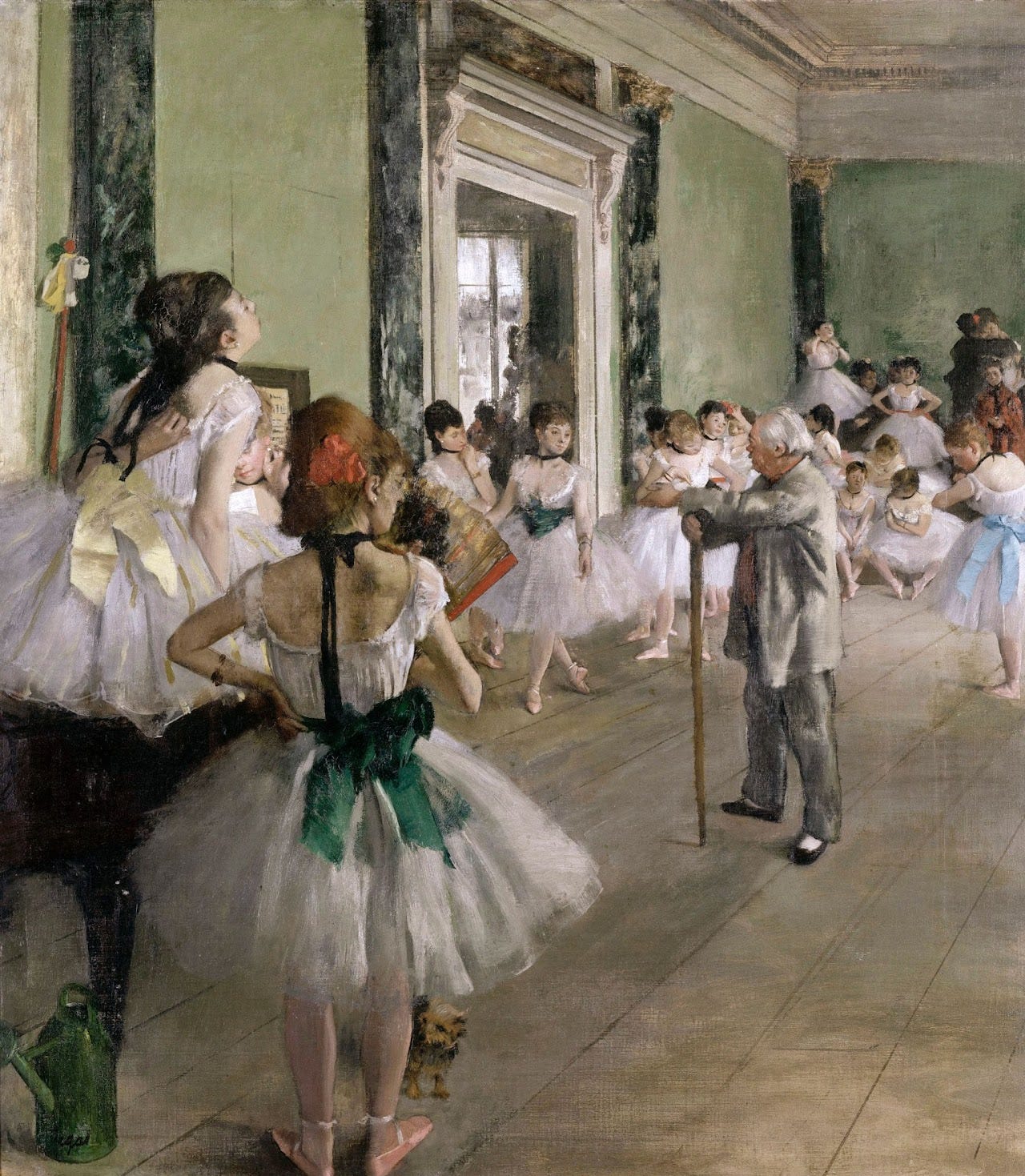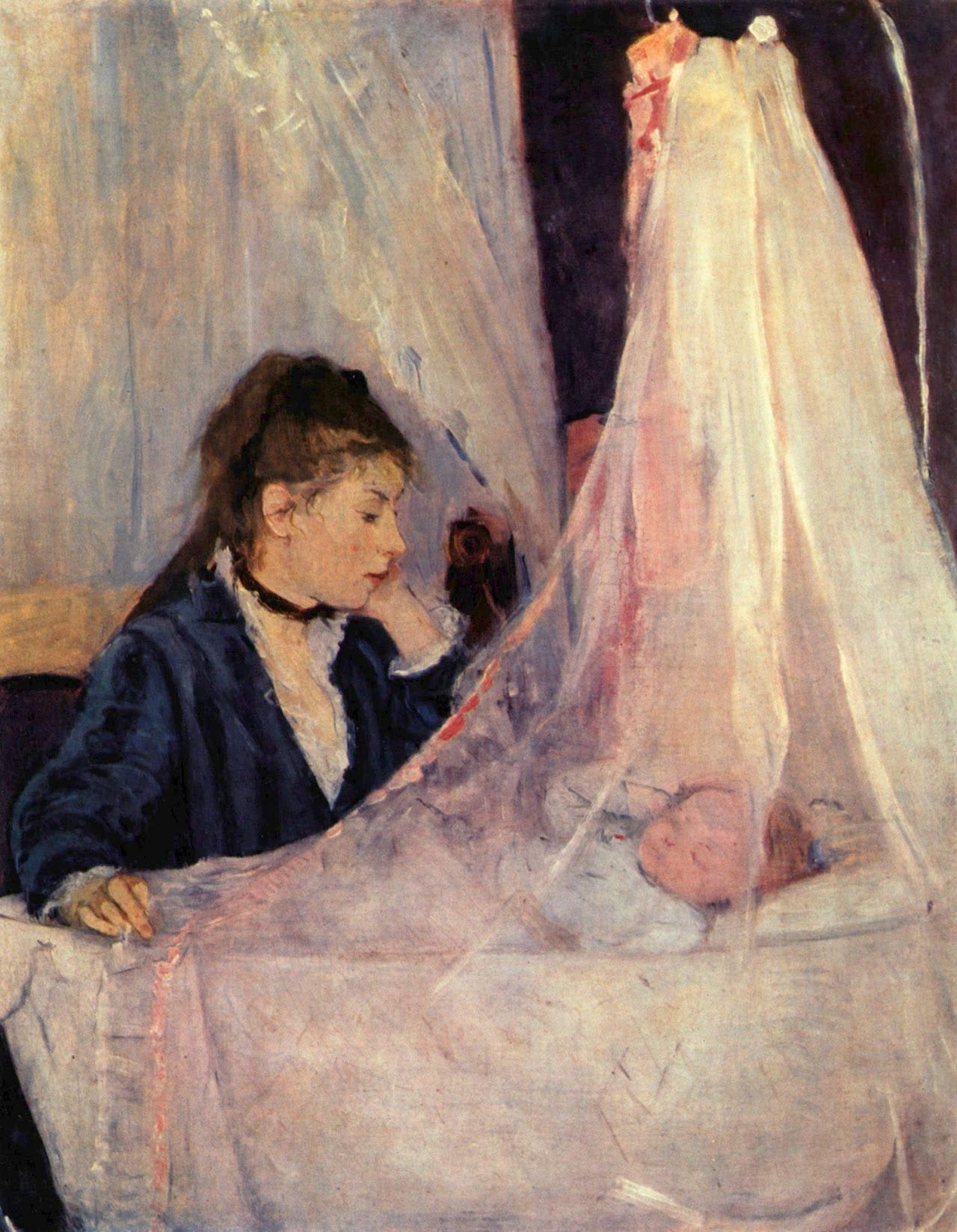A crash course on Impressionism
An introduction (at best) to the world of the impressionists, brought to you by a high school art kid.
Once upon a lovely March of 2023, I found myself at the Musée d’Orsay in Paris. I was completely mesmerized by the colours, texture and mood created by the wonderful artists of the Impressionism movement. As such, I decided to do a research project on Impressionism, and that is the very one that I share with you all today.
A Moment in Time: Impressionism
Impressionism was an art movement that dates approximately from the 1860s to the 1890s, originating in Paris. The art movement is characterised by small, visible brush strokes, emphasis on the depiction of the changing quality of light rather than a realistic depiction of the subject, composition influenced by the introduction of photography, plein air painting, and ordinary subject matter.
This art movement comes after Romanticism, which dates approximately from the late 1700s to mid 1800s. Romanticism was an art movement characterised by art that placed a focus on emotion and moods, rather than reason and order. Some key works include Liberty Leading the People, 1819, by Eugene Delacroix, Wanderer above the Sea of Fog, 1818, by Caspar David Friedrich, and Saturn Devouring His Son, 1819–1823, by Francisco Goya.
Although Impressionism comes after Romanticism, they are two very distinct art periods. This can be attributed to the rise of photography, which led to experimentation when it came to composition in art. Also, because of cameras, there was no longer a need for art to accurately depict a subject, allowing the Impressionists to experiment even further. Lastly, the invention of paint tubes allowed artists to take their art supplies outdoors, rather than having to work from a studio.
At first, Impressionists faced harsh criticism from the art community in France due to their unique style of painting. Being rejected from official exhibitions, they decided to organize their own group exhibitions, the first being in Paris in 1874. One critic in particular, Louis Leroy, created the name for the art movement, when calling Impression, Sunrise by Claude Monet a sketch or "impression", rather than a finished painting.
Today, the Impressionists are celebrated and remembered for their contributions to the world of art. They have left a legacy and impact on today's world of art and culture, and their work continues to be appreciated. For example, the Musée d'Orsay in Paris, the museum in which the pieces of art that will be further discussed on this site are on display, receives around 3 million visitors per year. Impressionists challenged the constraints of previous art periods and created innovative works by experimenting with brushwork, composition, subject, and colour. This paved a path for art movements to come, such as Post-Impressionism and Fauvism, and even today, many contemporary artists continue to be inspired by Impressionism.
Key Work: Rouen Cathedral Series
The Rouen Cathedral series is a group of over thirty oil paintings created by Claude Monet in the 1890s. The subject of each painting is the Rouen Cathedral - a Roman Catholic Gothic church in Rouen, Normandy, France, situated right across the street from Monet's temporary art studio. Although the subject remains the same for each painting, every piece is unique, capturing the cathedral in a different light.
The cathedral was built over the span of over eight hundred years, and is known for its three towers, each in a different style. Each of the three portals of the west façade that are seen in Monet's paintings are filled with sculptures of prophets, sibyls, fortune-tellers, patriarchs, and Biblical stories.
Amongst the many paintings in this series, four are on display at the Musée d'Orsay in Paris. They are: Le Portail, temps gris, Le Portail, soleil matinal, Le Portail et la Tour Saint-Romain, effet du matin, and Le Portail vu de face. The first two paintings show a close-up view of the west façade of the cathedral, on an angle, as if you are standing to the right of the church. The third shows the same façade, but zoomed out further, showing the Saint-Romain tower. The fourth painting shows the same façade, but as if you are looking at it straight-on. For each of the paintings, there is very little negative space, the most negative space being in Le Portail et la Tour Saint-Romain, effet du matin, which shows us a glimpse of the surrounding buildings.
Le Portail, temps gris is a very dark, stormy, and moody painting. Using grey as the main colour, and a purple/blue colour for the deeper parts of the portals, this piece portrays the cathedral on a gloomy day.
Le Portail, soleil matinal is my favourite painting from the four at the Musée d'Orsay. The portals have a warm, glow-like quality, and features colours such as yellow, pink, green, and purple. The shadows are blue and brown, rather than the grey used in Le Portail, temps gris, really capturing the light of a sunny morning.
Le Portail et la Tour Saint-Romain, effet du matin is very hazy and cold. You can almost feel the glacial morning air when looking at it, due to the pale blue colour and haziness.
Le Portail vu de face is the only piece to not clearly state the time or weather in which it was created. As a viewer, I believe that brown is used throughout to create harmony, as well as to portray lighting on a cold, wet, autumnal day.
In person, you can see the thick layers of paint on the canvas, as if the painting has been reworked several times. This texture, alongside the lack of detail and sharp line, creates a hazy, dream-like quality to the work, as if looking at a memory. This reiterates the idea that the focus of this series was not to create a realistic representation of the cathedral, but rather to capture the effect of light.
Each work has its unique colour palette and sense of unity, however, putting all of the pieces together as a series makes the works even greater, due to the contrast between each piece despite portraying the same subject.
The Rouen Cathedral series is a great example of Impressionistic painting. The paintings demonstrate many of the characteristics of Impressionism, such as the small, visible brush strokes, emphasis on the depiction of the changing quality of light rather than a realistic depiction of the subject, plein air painting, and ordinary subject matter.
Important Works
Luncheon on the Grass
Luncheon on the Grass, 1863, by Edouard Manet is an oil painting depicting a nude woman eating lunch with two fully dressed men. In front of them are the woman's clothes, fruit in a basket, and bread. In the background we see another woman bathing in the stream, however, she seems disproportionately large in comparison to the other figures.
This painting demonstrates many of the characteristics of Impressionism, such as the small, visible brush strokes, and an unrealistic depiction of the subject (the woman in the background not being proportionate to the rest of the painting).
Bal du Moulin de la Galette
Bal du Moulin de la Galette, 1876, by Pierre-Auguste Renoir is an oil painting depicting working class Parisians dressed up, dancing, drinking, and eating at the Moulin de la Galette in the district of Montmartre, Paris.
This painting demonstrates many of the characteristics of Impressionism, such as the small, visible brush strokes, emphasis on the depiction of the changing quality of light rather than a realistic depiction of the subject, plein air painting, and ordinary subject matter (working class Parisians). Additionally, the composition is influenced by photography, as we see many of the subjects are only partially in the frame, similar to a photograph.
The Ballet Class
The Ballet Class, 1871 - 1874, by Edgar Degas is an oil painting depicting a group of young female ballet dancers at a ballet lesson. Their teacher is ballet master Jules Perrot, who was a friend of Degas.
This painting demonstrates many of the characteristics of Impressionism, such as the small, visible brush strokes, the light colours, natural lighting, ordinary subject matter, and unique composition.
The Cradle
The Cradle, 1872, by Berthe Morisot is an oil painting depicting Morisot's sister Edma Portillon looking down at her daughter Blanche, who is asleep in her cradle. There is a veil on the cradle, which emphasizes the intimacy of their relationship, all whilst creating a distance between the viewer and the child. This is one of many Morisot paintings exploring motherhood.
This painting demonstrates many of the characteristics of Impressionism, such as the small, visible brush strokes, soft light, pale colours, and ordinary subject matter.
Alright, that’s it from me for now! I hope that you enjoyed, and that you learnt a little something about one of my favourite art movements in the history of western art! Until next time!


